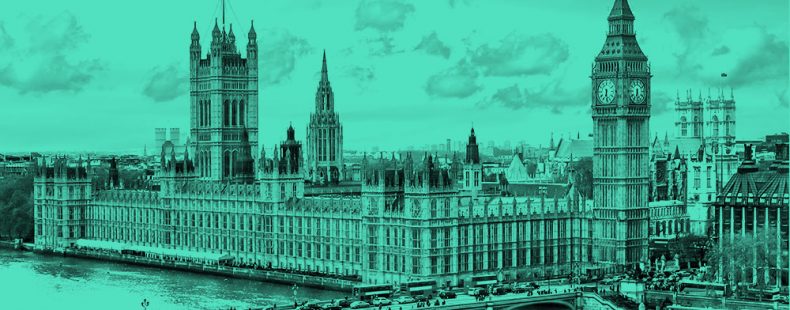Royalty is built on ceremony and tradition, and these ceremonies and traditions are excruciatingly planned down to the slightest detail, often years in advance.
Here are some key terms that explain the intricacies of British royal rituals and the places they are performed, including the elaborate funeral of Queen Elizabeth II, coronations, royal weddings, and the final resting places of British monarchs.
lie in state
Before Elizabeth II’s funeral, a lying-in-state ceremony was planned to take place at Westminster Palace. The phrase lie in state is used in the context of prominent figures (not just royalty) whose remains are placed in a public place to allow people to pay their respects. The idiom lie in state uses the older phrase in state, which means “with pomp and ceremony” and is also (less commonly) used in phrases referring to other actions, as in dine in state.
catafalque
A catafalque is a raised structure on which the body of a deceased person lies or is carried in state. Elizabeth II’s remains were placed on a catafalque during her lying in state at Westminster Hall, one of the buildings in the Palace of Westminster.
cortege
A cortege is a procession, especially a ceremonial one. Queen Elizabeth II’s funeral procession was commonly referred to as a cortege.
The Royal Standard
The Royal Standard is a flag that bears the arms of the monarch of the United Kingdom. Only the monarch is allowed to use the Royal Standard. There are two versions of the Royal Standard: one that is only used in Scotland and another that is used most everywhere else. The Scottish version places greater prominence on the Lion Rampant of Scotland (the royal arms of Scotland). Elizabeth II’s coffin was draped with the Scottish version when it was transported through Scotland.
Brush up on geography by learning what the United Kingdom, Great Britain, and England refer to.
coronation
A coronation is the ceremony of crowning a sovereign (a monarch). The noun coronation and the verb coronate originally come from the Latin word corōna, meaning “crown.”
Charles automatically became king upon the death of his mother, Elizabeth II, even though a coronation had not yet taken place.
consort
In royal contexts, the term consort refers to the spouse of a reigning monarch. Besides some rare exceptions, the spouse of a monarch has no ruling power and so they are not referred to as a king or queen.
In Britain, there is no official title for a male spouse of a ruling queen. Queen Victoria gave her husband, Prince Albert, the title of Prince Consort. This same title was offered to Elizabeth II’s husband Prince Philip, but he refused it. Philip was often referred to by the media and the British government as “the Queen’s consort” or by his official title, the Duke of Edinburgh.
queen consort
The term queen consort refers to the wife of a ruling monarch. This title will be used by Charles III’s wife, Camilla.
queen regnant
The term queen regnant refers to a queen who rules in her own right—like Elizabeth II. Unlike a queen consort, whose spouse is the ruler, a queen regnant is the one with the ruling power. A queen regnant is sometimes also known as a queen regent, but this term is much more commonly used to refer to a woman who rules on behalf of someone else. For example, Isabella of France was the queen regent of England on behalf of her underage son Edward III until he was old enough to rule in his own right.
Commonwealth
In the context of Great Britain, the Commonwealth refers to the Commonwealth of Nations, a political association of more than 50 countries, most of which are former British colonies. The word Commonwealth is also often used to refer to a Commonwealth Realm, one of 14 countries that recognize the monarch of the UK as their head of state. Elizabeth II was officially the Queen of these countries and now Charles III is their king.
Balmoral Castle
Balmoral Castle, located in Aberdeenshire, Scotland, is one of the residences of the British royal family. It was the place where Elizabeth II died and was the starting point of the procession to her funeral at Westminster Abbey.
Balmoral Castle gives its name to three pieces of clothing. The word balmoral is used to refer to a particular type of coat, shoe, and hat.
Buckingham Palace
Buckingham Palace is another residence of the British royal family, famously located in London. It serves as the main administrative building of the royal family, where many royal ceremonies and functions are performed, such as meetings with foreign dignitaries or the prime minister.
Buckingham Palace should not be confused with the nearby Palace of Westminster on the River Thames, where meetings of Parliament take place (and where Big Ben is located).
Westminster Abbey
Westminster Abbey is a large, Gothic church located next to the Palace of Westminster in London. Westminster Abbey is a place of great historical significance in British history—every coronation ceremony has been held there since that of William I in 1066. The wedding of Elizabeth II and Prince Philip was held at Westminster Abbey.
Traditionally, it has also been the burial site of British monarchs. The last royal funeral held at Westminster Abbey before Elizabeth II’s was that of George II in 1760.
Wellington Arch
Wellington Arch is a London landmark originally built as an entrance to Buckingham Palace. It later became a symbol of victory of the Duke of Wellington’s defeat of Napoleon at Waterloo. Elizabeth II’s funeral plans called for her coffin to be transported to Wellington Arch before being taken to Windsor Castle.
Windsor Castle
Windsor Castle is a residence of the British royal family located in Berkshire, England. It is thought to be the largest castle in the world that’s in use as a residence. It serves as both a home and a place where some official duties are performed.
Is England on your travel list? Then you should learn the difference between quid and pound.
Windsor
Windsor is the name of the house of the British royal family and effectively functions as the members’ surname. The royal house’s name was changed to Windsor from Saxe-Coburg-Gotha by proclamation of King George V in 1917 due to anti-German sentiment during World War I. Members of the family who aren’t princes or princesses use the name Mountbatten-Windsor, which includes the name of Prince Philip’s house, Mountbatten.
St. George’s Chapel
St. George’s Chapel is located within Windsor Castle. Many royal weddings have taken place there and it is the resting place of several British monarchs, including Elizabeth II’s father George VI.
The funeral plans for Elizabeth II called for her to be interred alongside her late husband Philip in the King George VI Memorial Chapel, located in part of St. George’s Chapel. After Prince Philip’s funeral in 2021, his remains were originally placed within the Royal Vault under St. George’s Chapel with the intent that they would be moved upon the death of the queen.














